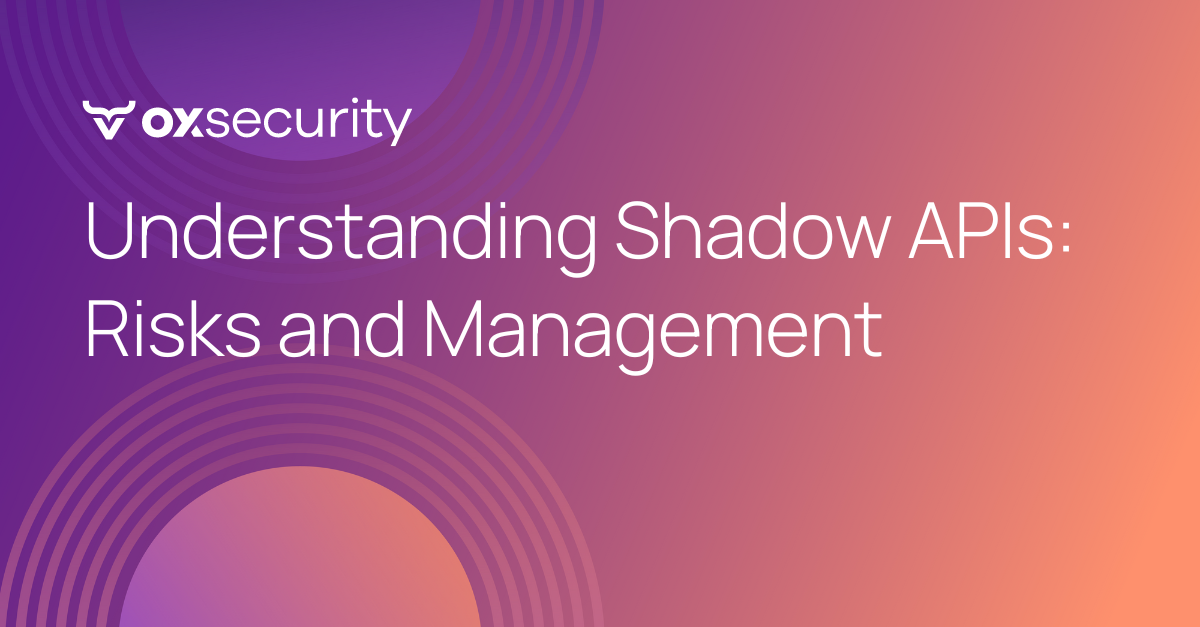The term “shadow API” might evoke images of covert operations or hidden threats lurking in the digital shadows. While they aren’t the stuff of spy thrillers, shadow APIs can indeed pose significant risks to organizations. These are APIs that operate outside the usual IT controls and cyber defenses, making them attractive targets for malicious actors. Like shadow IT, shadow APIs exist beyond the radar of IT and security teams, introducing potential cyber risks and compliance issues. For security teams, it can sometimes feel like playing whack-a-mole trying to keep track of which APIs are in use.
With software releases happening faster and faster, it’s crucial to understand the nature of shadow APIs and how they can impact your organization. Addressing these hidden elements is essential for maintaining proactive security measures and ensuring that no gaps are left unprotected.
What is a Shadow API?
A Shadow API, often referred to as a “rogue API,” is an API that exists within an organization’s environment but is undocumented, unmanaged, and often unknown to the IT and security teams. An API should be known to the IT department that deployed it. It ought to be registered with an API management tool, governed by policies, and protected by security controls. Call these “normal APIs.” In contrast, a shadow API comes into existence outside of regular view—under the radar, so to speak.
There isn’t anything sinister going on with a shadow API. Developers create them all the time for good reasons and with the best of intentions. For example, a developer might need an API for a project and quickly throw one together for a purpose that is known to the dev team, but no one else. The API might serve as a connector between two applications that lack “out of the box” APIs. The team is in a rush, so there’s no time to subject the API to any official governance procedures. It remains invisible to API management and security tools. It is in the shadows.
A shadow API can also be an API developed by a third party, such as a software-as-a-service (SaaS) vendor. It’s a regular API, in common use. However, if a team deploys it without including it in the organization’s API management system, it exists in the shadows. It’s out of sight and exposing the organization to risk.
What are the Risks of Shadow APIs?
Shadow APIs represent points of vulnerability within an organization’s IT environment. These APIs probably lack proper authentication and access controls, which means they could expose sensitive data to unauthorized users or even the general public. Adversaries can exploit shadow APIs to gather information about an organization, planning their attacks accordingly. The most troubling aspect is that these vulnerabilities exist completely out of view from security monitoring solutions. By the time anyone notices a problem, such as data exfiltration, a shadow API attack is likely well underway.
Incidents and breaches caused by shadow APIs are costly to handle. They can also lead to regulatory compliance issues, especially with consumer privacy laws. Just think of the recent Optus breach, in which a shadow API was exploited. The costs and implications of such incidents are far-reaching, impacting financial standing, reputation, and legal standing.
What is API Security Management?
API security management involves the processes and tools used to protect APIs from threats and vulnerabilities. This includes monitoring API traffic, enforcing security policies, and ensuring that APIs adhere to security standards. Effective API security management is essential for mitigating the risks posed by both managed and unmanaged APIs.
An API that lacks the right security measures can become a significant point of entry for attackers. API gateways act as central control points, helping manage API traffic and enforce security policies. Authentication and authorization measures ensure only authorized users can access APIs, while rate limiting and throttling prevent abuse by controlling request volumes. Encrypting data both in transit and at rest protects sensitive information, and input validation prevents injection attacks. Logging and monitoring provide visibility into API usage patterns, enabling real-time threat detection and response. Regular security testing and policy enforcement are crucial for identifying and addressing vulnerabilities, ensuring that all APIs, shadow or otherwise, are secure.
For example, imagine an e-commerce platform that uses multiple APIs to handle transactions, user data, and product information. One day, a developer creates a new API to integrate a third-party payment service. This API, however, is not registered with the IT department or included in the existing API management system. It lacks robust authentication measures and data encryption protocols. Hackers discover this shadow API and use it to intercept and steal sensitive customer payment information. Because the API is not monitored, the breach goes undetected for weeks, resulting in significant financial losses, regulatory penalties, and damage to the company’s reputation.
How Should You Manage Shadow APIs?
APIs present a conundrum for AppSec and Product Security Managers. If they’re invisible, how does anyone even know to address their risk? Organizations should make it simple for their teams to track these APIs. A number of techniques are proving effective at detecting shadow APIs. Managing Shadow APIs requires a systematic and proactive approach:
- Discovery and Inventory: Utilize tools to discover all APIs within your environment, including those that are undocumented. Techniques for detecting shadow APIs include network scanning to identify unusual API traffic, code analysis to find undocumented APIs in the codebase, and monitoring developer activities for new API deployments.
- Continuous Monitoring: Implement continuous monitoring to track API usage and detect any unauthorized or suspicious activities. Using API monitoring tools can help in tracking API traffic patterns and identifying anomalies that may indicate the presence of shadow APIs.
- Security Audits: Conduct regular security audits to ensure that all APIs comply with security policies and standards. Audits should include reviewing API configurations, checking for proper authentication and authorization mechanisms, and ensuring data encryption practices are in place.
Managing Shadow APIs needs to come with a strategic approach to application security and can’t be done in a silo. It’s important to look at the software supply chain, SaaS, and other elements to ensure there are no gaps. A comprehensive security strategy should encompass all aspects of your IT environment to provide holistic protection.
How OX Can Help with API BOM
Managing shadow APIs and maintaining a secure API environment can be a daunting task. This is where OX comes in with its API Bill of Materials (API BOM). OX automatically generates and maintains an up-to-date inventory of all APIs in use within each application. This comprehensive inventory includes detailed insights into each API’s purpose, users, and data sensitivity.
With OX’s API BOM, you can:
- Gain Complete Visibility: Ensure that all APIs, including shadow APIs, are accounted for and visible to your security and IT teams.
- Monitor and Manage: Keep track of API usage and detect any anomalies or unauthorized activities.
- Enhance Security: Implement robust security measures for all APIs, ensuring they adhere to your organization’s security policies and standards.
- Ensure Compliance: Maintain compliance with industry regulations by having a documented inventory of all APIs and their security configurations.
By leveraging OX’s API BOM, you can mitigate the risks associated with shadow APIs, protect sensitive data, and ensure a more resilient security posture.
You can learn more about OX’s API BOM by signing up for a free trial or watching our webinar, “From Hidden Risks to Complete Control: Expanding Software & API Inventories for Modern Compliance and Visibility.







)

